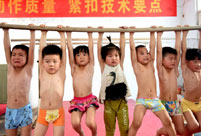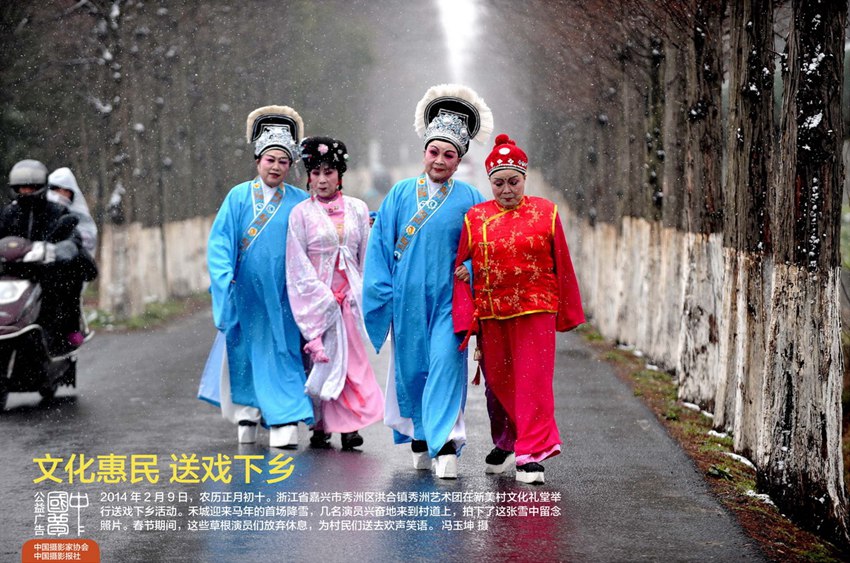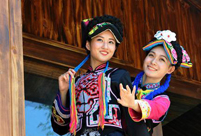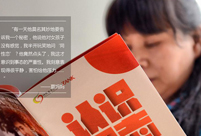 The 4th Chinese National Pole Dance Championship held in Tianjin
The 4th Chinese National Pole Dance Championship held in Tianjin
 Chinese navy commandos debut at 2014 RIMPAC
Chinese navy commandos debut at 2014 RIMPAC
 Guangxi impression: scenic countryside
Guangxi impression: scenic countryside
 World's largest aquatic insect found in Sichuan
World's largest aquatic insect found in Sichuan
 Ceremony volunteers for Youth Olympics make public appearance
Ceremony volunteers for Youth Olympics make public appearance
 A glimpse of female crew of Liaoning aircraft carrier
A glimpse of female crew of Liaoning aircraft carrier
 Stills from "Dad, where are we going?"
Stills from "Dad, where are we going?"
 Legless man's happy life
Legless man's happy life
 Top ten most beautiful islands in China
Top ten most beautiful islands in China
 Aerial view of Hong Kong
Aerial view of Hong Kong
BEIJING, July 23 -- Chinese President Xi Jinping's tour to Latin America has brought an opportunity for two cultural traditions to create more active dialogue and bridge the great ocean that separates them.
In Havana on Tuesday evening, the last stop of his Latin America trip, President Xi enjoyed a ballet performance by Chinese and Cuban dancers with Cuban President Raul Castro.
The program featured a special dance created by 93-year-old Cuban ballet legend Alicia Alonso that paid tribute to Chinese culture. Titled "Dancer," the performance incorporated the passionate and dramatic Cuban Ballet with the skills of Chinese Peking Opera accompanied by ancient Chinese music.
Twelve hours before the ballet show, at a concert in Beijing, musicians from China's Central Conservatory of Music used traditional Chinese musical instruments such as the erhu to play Peruvian folk music.
At first glance, Chinese and Latin American cultures could not be more different, with stereotypes of conservative and introverted Chinese versus outgoing and dramatic Latin Americans.
However, as President Xi noted, Chinese and Latin Americans share a natural affection, despite the long distance from each other.
They share a similar destiny, as both are ancient cultural traditions struggling to fit into a modern world while trying to maintain their own identities.
On the other hand, the differences between the cultures may be what attracts them to each other.
Many Chinese are interested in Latin American art. Xu Xuanyi, a Beijing woman in her late twenties, is not a professional dancer but became one of the founders of the Chinese Association of Argentine Tango and competed in the World Tango Championship in Buenos Aires last year.
Several months ago when Colombian writer and Nobel laureate Gabriel Garcia Marquez passed away, many Chinese mourned his death and voiced their love of his works.
There are plenty of examples of young Chinese artists succeeding in blending Latin American flavor into their art and drawing attention for their exotic style.
Government efforts to promote cultural cooperation between the two sides have also contributed. There are 31 Confucius Institutes in 14 Latin American countries, including Brazil, Argentina and Cuba. During this tour, President Xi pledged to establish more.
In the next five years, China will also grant government scholarships to 6,000 students from Latin American and Caribbean countries, invite 6,000 people to attend training courses and 400 for in-service master programs in China, as well as invite 1,000 leaders of political parties to visit China. In 2015, China will launch a training program for 1,000 young leaders from China, Latin America and the Caribbean.
At a summit with 11 Latin American and Caribbean leaders last week, Xi also suggested that 2016 be designated as the "Year of Cultural Exchanges" between China and the region.
With support from the government and leaders, the budding cultural exchanges between the two sides of the Pacific will prosper. Chinese and Latin American people will be able to overcome the geographic distance and approach each other.
 Zhujiang ambassadors attend lotus lanterns activity
Zhujiang ambassadors attend lotus lanterns activity
 From girly girl to tough special police officer
From girly girl to tough special police officer
 Children attend gymnastics training in summer
Children attend gymnastics training in summer
 Beautiful sceneries along the special travel route in Xinjiang
Beautiful sceneries along the special travel route in Xinjiang
 Focus on 1st female patrol team in Turpan
Focus on 1st female patrol team in Turpan
 Collection of 'China Dream' public-spirited ads
Collection of 'China Dream' public-spirited ads  National fitness team members integrate traditional and modern beauty
National fitness team members integrate traditional and modern beauty Moms on their kid’s coming out
Moms on their kid’s coming out Chinese fighters through lens
Chinese fighters through lens
 48 hours after super Typhoon Rammasun
48 hours after super Typhoon Rammasun Bikini show held at water park in Xi'an
Bikini show held at water park in Xi'an
 Lobster vs cat: catch me if you can
Lobster vs cat: catch me if you can  Heat waves sweep China
Heat waves sweep China  Top 10 most beautiful islands in China
Top 10 most beautiful islands in China
 Zhou Xun announces engagement to Archie Gao
Zhou Xun announces engagement to Archie Gao
Day|Week|Month